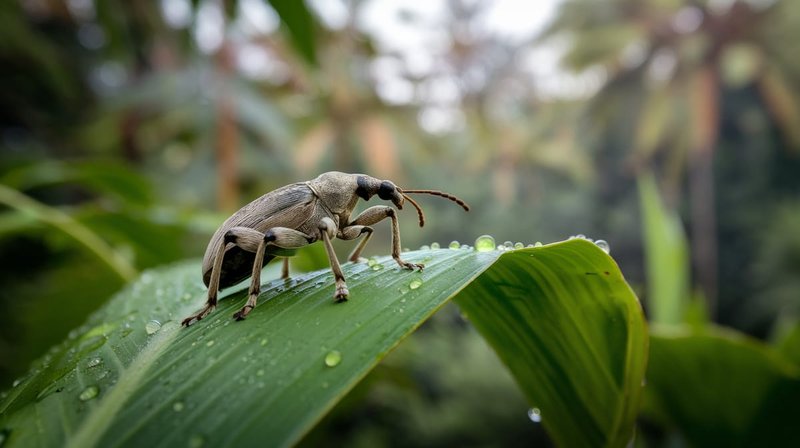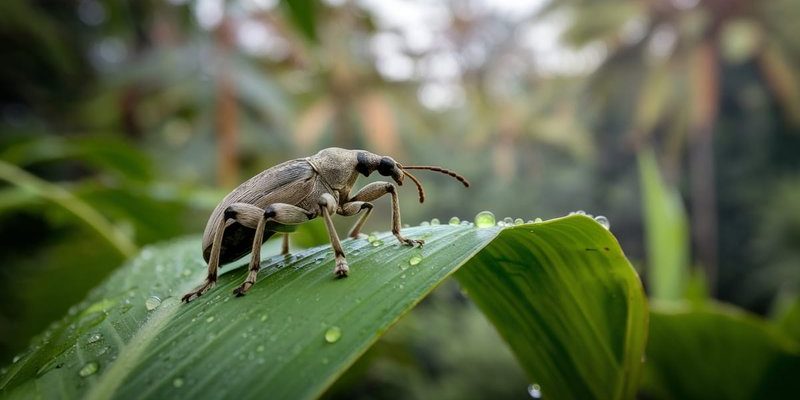
Weevils belong to the family of beetles known as Curculionidae. They’re not just any ordinary insects; they are known for their distinctive snouts and a knack for causing havoc among plants—especially crops. But with every weevil lurking around, there are also natural predators and environmental threats. Whether it’s a hungry bird, a larger insect, or even changes in weather, weevils must navigate a world full of challenges. So, what exactly are these predators and threats? Let’s explore!
Understanding the Weevil: A Brief Overview
Before we jump into the threats, it’s essential to know what weevils are and why they matter. Weevils are primarily plant feeders, and they can be found in various environments. You might spot them munching on grains, fruits, or even flowers, making them key players in their ecosystems. The female weevil often lays her eggs inside plant material, which provides a ready food source for the larvae once they hatch.
You might wonder why weevils matter in the bigger picture. They contribute to pollination and serve as a food source for other animals. In some cases, certain weevil species have even been used in agriculture to help control pest populations. They may have their quirks, but they fit right into the web of life.
Birds: The Feathered Predators
Birds are among the most common predators of weevils. Imagine a swooping hawk or a curious blue jay spotting a weevil among the leaves. Birds have excellent vision and can see tiny insects that might be camouflaged. They often consume weevils as part of their regular diet.
Some birds, like chickadees and wrens, actively hunt for insects, while others might just be opportunistic eaters, snatching a weevil here and there. The threat from birds is significant, as they can quickly reduce weevil populations in a given area.
Insect Predators: Larger Players in the Game
Aside from birds, weevils have to watch out for other insects. Larger insects, such as ground beetles and certain wasp species, will prey on weevils, especially in their larval stages. Here’s the thing—these predators are often well-camouflaged themselves, making them sneaky hunters.
Ground beetles, for instance, can be ferocious when it comes to hunting down small insects. They have strong mandibles that allow them to crush their prey swiftly. Wasps, on the other hand, are fascinating predators: some lay their eggs inside weevils, leading to a rather gruesome fate for the host weevil.
Parasites: A Sneaky Threat
Another threat to weevils comes from parasitic organisms. These tiny invaders, like parasitic wasps or certain types of nematodes, can infect weevils and use them as hosts. When infected, a weevil might not show immediate signs, but eventually, the parasite can take over.
For instance, parasitic wasps can lay their eggs inside the weevil’s larvae. Once the eggs hatch, the wasp larvae consume the weevil from the inside out. It’s a brutal survival tactic, but it’s a stark reminder of the harsh realities of nature.
Environmental Factors: Changes in Habitat
You might be wondering how external factors come into play. Well, environmental changes can significantly impact weevil populations. Factors like climate change, habitat destruction, and pesticide use can create unhealthy living conditions for weevils.
Rising temperatures can alter the habitats weevils thrive in, forcing them to adapt or migrate to new areas. Similarly, drastic changes in weather patterns can lead to drought or flooding, further endangering their existence. It’s like a game of survival, where the rules keep changing.
Crop Management and Human Influence
Humans can also be a double-edged sword when it comes to weevils. On one hand, agricultural practices can help control weevil populations through integrated pest management strategies. On the flip side, pesticides and monoculture practices can eliminate weevils’ natural habitats.
Farmers often use pesticides to combat pest infestations, which can inadvertently harm weevils and their predators. Understanding the balance between protecting crops and maintaining healthy ecosystems is crucial. After all, a healthy weevil population contributes to the overall health of the environment.
In the grand scheme of nature, the weevil’s life is a constant adventure filled with challenges. From birds swooping down to insect predators lurking nearby, every day can feel like a tightrope walk for these tiny creatures. It’s a wild world out there, where the balance of life is ever-changing.
While weevils face numerous threats, they also play a vital part in the ecosystem. Protecting their populations is essential not just for weevils themselves but for maintaining the health of our environment as a whole. By understanding their predators and threats, we can better appreciate the complexity of life and the delicate balance that sustains it. So next time you come across a weevil, remember, there’s a lot more to their story than meets the eye!

